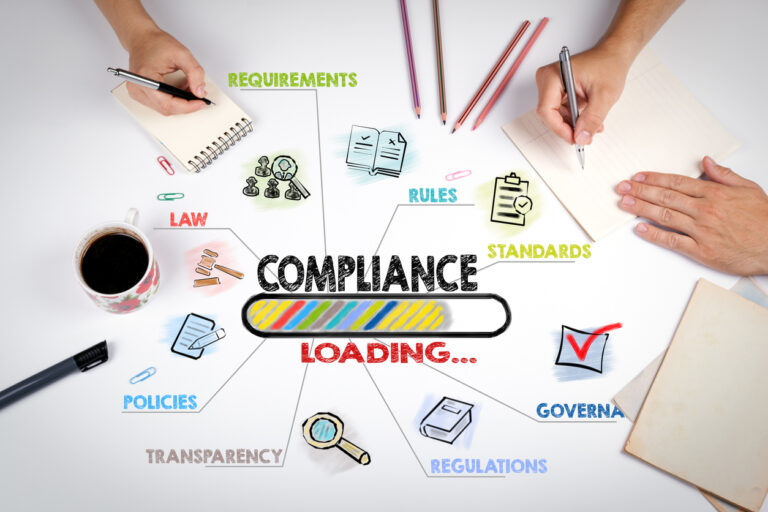"Tick-box culture is not risk management—it’s a leadership liability in disguise."
Lisa Sisson
The Wake-Up Call: Risk Management Is Not What You Think It Is
Many executives believe that as long as their organisation is ticking the right boxes—meeting legal, regulatory, and compliance requirements—they’re managing risk effectively.
But here’s the truth:
What’s often labelled as “risk management” is really just paperwork.
And paperwork doesn’t protect your people, your purpose, or your performance.
Outdated, heavily compliance-driven approaches are quietly suffocating businesses.
They may keep regulators happy, but they also:
- Limit innovation and adaptability
- Create rigid systems and processes that impact employees’ ability to fulfil their work requirements
- Fuel disengagement and decision fatigue
- Often result in driving out your best talent
- Leave blind spots that grow into reputational or financial disasters
❝Tick-box risk management doesn’t protect—it constricts.❞
And when systems are built to survive audits—not adapt to reality—risk becomes buried under bureaucracy, until it leaks through the cracks.
The reality?
Rigid systems often force employees into silent workarounds.
And those workarounds—though necessary to get the job done—introduce new, hidden risks no one is tracking.
That’s not risk mitigation.
That’s risk multiplication.
And it’s happening quietly, beneath the surface, in organisations everywhere.
So why does this keep happening?
Because many executives are still operating under a set of deeply ingrained myths about risk management.
Beliefs that feel safe, but actually leave organisations exposed.
Let’s break down three of the most common myths keeping leaders stuck—and the truths that Risk Rebels already know.
Myth #1: Compliance = Risk Management
For many executives, risk management begins and ends with compliance.
As long as policies are up to date and audits are passed, they believe their bases are covered.
But that belief is outdated—and dangerous.
Because what’s happening behind the scenes isn’t protection—it’s performance.
Almost theatrics. In truth, it’s smoke and mirrors.
Layers of documentation.
Templates.
Frameworks that look sophisticated—but rarely show up in practice.
It creates a convincing illusion—a kind of Protection Theatre—where the focus shifts from building resilience to demonstrating readiness.
From engaging people to impressing regulators.
And it’s often so complex, so full of jargon, that it alienates many of the very people who want to understand risk and be part of the solution.
“You wouldn’t understand.”
“Just follow the process.”
“That’s for the audit to worry about.”
When risk becomes a closed system, people stop asking questions. They stop engaging.
They focus on survival—not on awareness, growth, or better decisions.
❝You can satisfy an audit and still be exposed.
You can tick every box and still be blind to the risks inside your culture.❞
And here’s what most leaders miss:
Compliance may reduce legal exposure—but it rarely improves performance.
It restricts.
It slows things down.
It creates fear of stepping outside the lines.
It’s a safety net, not a springboard.
And when compliance is mistaken for strategy, real leadership falls asleep at the wheel.
Myth #2: Risk Is Someone Else’s Job
Let’s be honest—many executives see risk as something technical, external, and distant.
Something handled by legal, audit, or the risk and compliance team.
They don’t feel responsible. They just want to be reassured it’s under control.
But here’s the truth:
❝You can outsource the function—but never the responsibility.❞
Risk isn’t a department. It’s a lens.
And when leaders detach from it, they create a dangerous disconnect between authority and accountability.
This is how organisations sleepwalk into culture failure, reputational damage, or operational collapse.
No one sees it coming—because no one at the top is actually looking through the right lens.
Executives don’t need to be risk experts.
But they do need to lead with risk intelligence—understanding how decisions, behaviours, and blind spots create or compound risk every day.
Myth #3: If We’ve Got Policies, We’re Covered
This is the “She’ll be right, mate” of modern leadership.
The idea that having policies, procedures, and risk registers is enough to insulate a business from failure.
But policies don’t make decisions.
People do.
And when those people don’t understand the real “why” behind the system—or when the system doesn’t reflect reality—those policies might as well be wallpaper.
A policy won’t stop someone from covering up an incident to protect their manager.
A procedure won’t challenge a senior leader who intimidates their team.
It’s meant to—but too often, it fails.
A risk register won’t prevent disengagement when people feel excluded, overworked, or disrespected.
❝Real protection doesn’t live in the paperwork.
It lives in culture, conversations, and everyday leadership choices.❞
The Risk Rebel Reframe: Leadership Is Risk Management
Risk isn’t just a function to review or a report to sign off.
It’s embedded in every decision, action, and inaction.
Every misaligned hire.
Every ignored warning sign.
Every tolerance of poor behaviour.
Every rushed choice that looks good on paper but undermines long-term value.
That’s why:
❝There is no real leadership without the right risk lens.
And there’s no meaningful risk management without courageous leadership.❞
This isn’t about fear.
It’s about awareness.
It’s about owning the role executives actually play in shaping the health, safety, and future of their organisations.
The most effective leaders don’t just oversee risk.
They lead through it—strategically, consciously, and in alignment with who they are and what their organisation stands for.
A Better Way Forward
It’s time to retire Protection Theatre.
To stop mistaking policies for protection.
To stop outsourcing what must be led from the top.
At Unearth, we work with executive teams to shift from reactive compliance to proactive, people-centred risk leadership.
Through our Risk Rebel Leadership Pathway, we develop next-generation leaders who know how to lead with courage, clarity, and conviction—transforming risk into their leadership superpower.
It exposes blind spots, misalignments, hidden exposures—and the opportunities buried within them—so leaders can better Protect the House.
Final Thought
You don’t need to know every detail of the risk framework.
But you do need to own your impact.
Because the greatest risk isn’t external.
It’s the one that comes from not leading the way you were meant to.
Are you managing risk?
Or just managing appearances?
Because at the end of the day, it’s not the ticked boxes that protect your organisation.
It’s the courage to lead—through risk, not around it.
Ready to shift the way you see risk?
Let’s have a conversation. Or better yet—join the Risk Rebel movement.
Because leadership without risk intelligence is no longer leadership at all.




